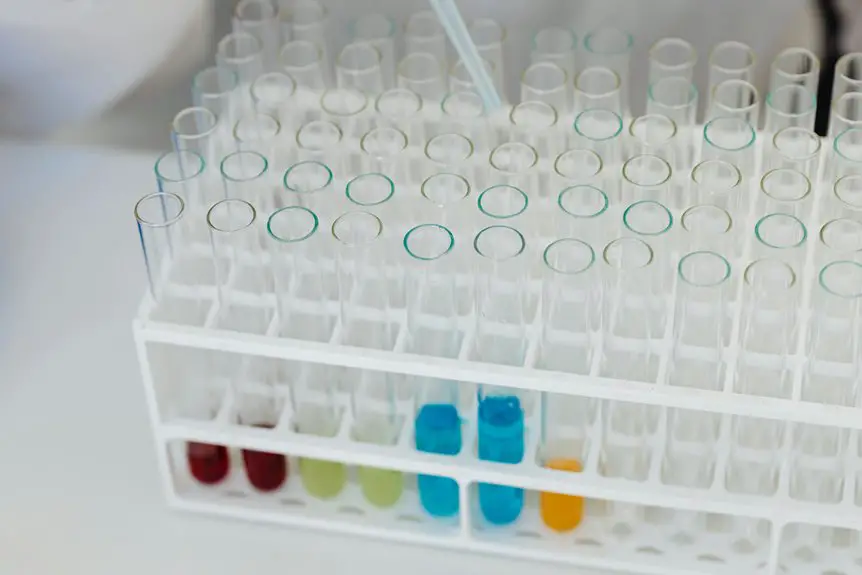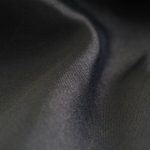You’re not exposed to toxic chemicals just by wearing Gore-Tex gear because its waterproof membrane is securely bonded within the fabric. Gore-Tex uses a special expanded PTFE material that blocks water but lets your sweat escape, keeping you dry without harmful exposure. While manufacturing involves some chemicals, everyday use is safe and unlikely to cause irritation. If you want to understand more about the materials and their effects, there’s plenty more to explore.
Table of Contents
Key Takeaways
- Gore-Tex fabric contains ePTFE, a membrane that blocks water but allows breathability, with chemicals tightly bonded in the material.
- Everyday use of Gore-Tex is generally safe, with minimal risk of skin irritation or toxicity from direct contact.
- Manufacturing exposure to chemicals in Gore-Tex production may pose moderate health risks, but these are controlled and limited.
- Fluorinated chemicals used in Gore-Tex can persist environmentally but do not typically transfer harmful levels during normal wear.
- Alternatives with safer chemical profiles exist, such as PFC-free membranes, which offer similar waterproof and breathable performance.
What Is Gore-Tex Made Of?
Although you mightn’t see it at first glance, Gore-Tex is made from a unique membrane consisting of expanded polytetrafluoroethylene (ePTFE). This material is incredibly thin yet durable, with microscopic pores that are small enough to block water droplets but large enough to allow water vapor to pass through.
When you wear Gore-Tex, this membrane works to keep you dry from rain or snow while letting sweat escape, enhancing comfort. The ePTFE membrane is bonded to fabrics like nylon or polyester, giving the material strength and flexibility.
Understanding this composition helps you appreciate how Gore-Tex achieves waterproofing without sacrificing breathability. You’ll notice that the material’s design relies on physical properties rather than chemical additives to provide its signature performance.
Chemicals Used in Gore-Tex Production
Now that you know Gore-Tex relies on a specialized ePTFE membrane for its waterproof and breathable qualities, it’s helpful to look at the chemicals involved in making this material.
The primary chemical is polytetrafluoroethylene (PTFE), a synthetic fluoropolymer known for its durability and resistance to heat and chemicals. To create the expanded form (ePTFE), PTFE undergoes a stretching process that forms microscopic pores.
During production, manufacturers may use small amounts of fluorinated surfactants and processing aids, which help shape and stabilize the membrane. Additionally, Gore-Tex fabrics often incorporate polyurethane or other polymers as laminates or coatings.
While these chemicals enable Gore-Tex’s unique properties, they’re tightly controlled during manufacturing. Understanding these components helps you appreciate the complexity behind Gore-Tex’s waterproof and breathable performance.
Potential Health Risks Associated With Gore-Tex
When you wear Gore-Tex products, you might wonder if the chemicals used in their production could pose any health risks. Generally, Gore-Tex is considered safe for everyday use, as the chemicals are securely bonded within the fabric. However, some concerns arise from prolonged exposure during manufacturing or if the material degrades over time. Direct skin contact rarely causes irritation, but sensitive individuals might experience mild reactions.
| Risk Level | Exposure Type | Possible Effect |
|---|---|---|
| Low | Everyday wear | Minimal to no health impact |
| Moderate | Manufacturing process | Respiratory irritation |
| Low to Moderate | Degraded fabric | Skin irritation |
| Unknown | Long-term exposure | Under study |
Stay informed but don’t worry; typical use doesn’t usually lead to health problems.
Environmental Impact of Gore-Tex Chemicals
Because Gore-Tex relies on fluorinated chemicals to achieve its waterproof and breathable qualities, these substances can have significant environmental consequences.
When you wear Gore-Tex products or dispose of them, tiny amounts of per- and polyfluoroalkyl substances (PFAS) can leach into soil and water.
These chemicals resist breaking down, leading to long-term pollution and accumulation in wildlife and ecosystems.
You should know that PFAS are often called “forever chemicals” because they persist in the environment for decades.
Their presence can harm aquatic life, disrupt ecosystems, and contaminate drinking water sources.
When manufacturers produce Gore-Tex, the release of these chemicals can contribute to environmental contamination.
As a consumer, being aware of this impact helps you make informed choices about the gear you use and how you dispose of it responsibly.
Alternatives to Gore-Tex for Safe Outdoor Wear
Understanding the environmental risks linked to Gore-Tex chemicals makes it clear that exploring safer alternatives is a smart move. You don’t have to sacrifice performance for safety or sustainability.
Look for outdoor wear made with PFC-free membranes like eVent or Sympatex, which offer breathability and waterproofing without harmful chemicals. Brands using plant-based or recycled materials also reduce environmental impact.
Consider products treated with durable water repellents (DWR) free from perfluorinated compounds. If you want natural options, waxed cotton or tightly woven nylon with proper care can provide water resistance.
Frequently Asked Questions
How Long Does Gore-Tex Material Typically Last With Regular Use?
Like a trusty steed, Gore-Tex lasts about 5 to 7 years with regular use. You’ll notice wear sooner if you expose it to harsh conditions, but proper care can extend its waterproof, breathable magic considerably.
Can Gore-Tex Clothing Be Safely Washed in a Home Washing Machine?
You can safely wash Gore-Tex clothing in a home machine. Use cold water, gentle detergent, and avoid fabric softeners. Always follow care instructions and tumble dry on low to restore waterproofing effectively.
Does Gore-Tex Fabric Provide UV Protection During Outdoor Activities?
Like a knight’s armor, Gore-Tex shields you from rain and wind but doesn’t block UV rays. So, don’t rely on it alone for sun protection—wear sunscreen or UV-specific gear during outdoor adventures.
Are There Specific Care Instructions to Maintain Gore-Tex Performance?
To maintain Gore-Tex performance, you should wash it regularly with a gentle detergent, avoid fabric softeners, and reapply a durable water repellent (DWR) treatment when water stops beading on the surface.
Is Gore-Tex Suitable for All Types of Outdoor Weather Conditions?
Think of Gore-Tex as your weather fortress—it shields you from rain, wind, and snow while letting sweat escape. You can trust it in most outdoor conditions, but extreme heat or heavy abrasion might test its limits.
- Does Chiffon Fabric Stink - July 15, 2025
- Does Chiffon Fabric Affect the Economy - July 15, 2025
- Does Cotton Fabric Have a Nap - July 15, 2025







